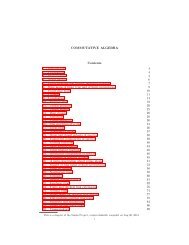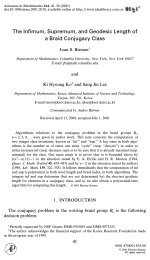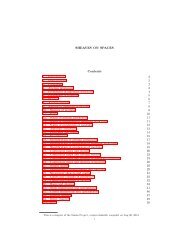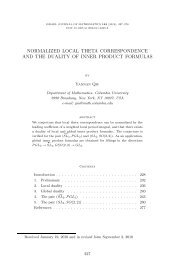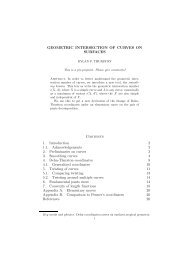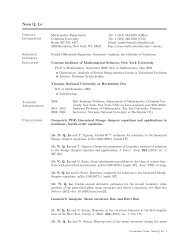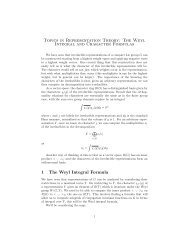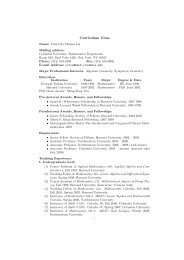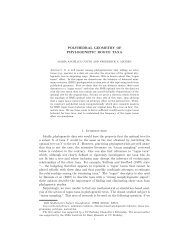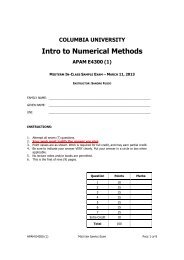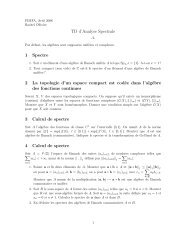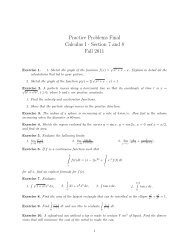INJECTIVES Contents 1. Introduction 1 2. Modules ... - Stacks Project
INJECTIVES Contents 1. Introduction 1 2. Modules ... - Stacks Project
INJECTIVES Contents 1. Introduction 1 2. Modules ... - Stacks Project
Create successful ePaper yourself
Turn your PDF publications into a flip-book with our unique Google optimized e-Paper software.
<strong>INJECTIVES</strong> 9<br />
sheaves. There exists a morphism G2 → Jα+1(F) such that the following diagram<br />
commutes<br />
G1 <br />
G2<br />
<br />
Jα(F)<br />
<br />
<br />
Jα+1(F)<br />
Proof. This is because the map iG1 → iG2 is injective and hence iG1 → iJα(F)<br />
extends to iG2 → J(iJα(F)) which gives the desired map after applying the sheafification<br />
functor. <br />
This lemma says that somehow the system {Jα(F)} is an injective embedding of<br />
F. Of course we cannot take the limit over all α because they form a class and<br />
not a set. However, the idea is now that you don’t have to check injectivity on all<br />
injections G1 → G2, plus the following lemma.<br />
Lemma 8.<strong>2.</strong> Suppose that Gi, i ∈ I is set of abelian sheaves on C. There exists an<br />
ordinal β such that for any sheaf F, any i ∈ I, and any map ϕ : Gi → Jβ(F) there<br />
exists an α < β such that ϕ factors through Jα(F).<br />
Proof. This reduces to the case of a single sheaf G by taking the direct sum of all<br />
the Gi.<br />
Consider the sets<br />
and<br />
S = <br />
U∈Ob(C) G(U).<br />
Tβ = <br />
U∈Ob(C) Jβ(F)(U)<br />
Then Tβ = colimα



